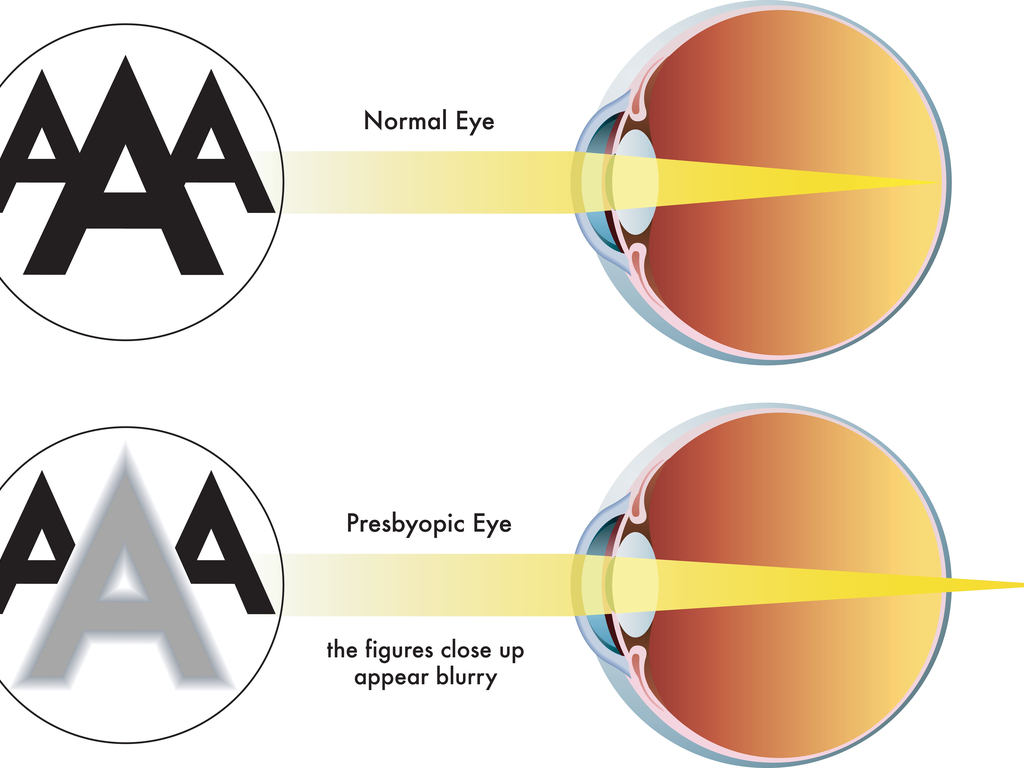The words of this opening sentence are blurry blobs on the screen, as this author is one of the 1.8 billion people worldwide with age-related far-sightedness — or presbyopia. Thanks to increased life expectancy and population growth, this figure is set to become 2.2 billion by 2030. Presbyopia is a growing concern, hence the proliferation of treatments. To go into the medical arsenal — along with reading glasses, contact lenses and refractive surgery — comes a pharmacological solution. Is there anything drugs can’t attempt to solve? In this case, it’s the FDA-approved pilocarpine — or Vuity™ (Allergan, an AbbVie company), as most of us call it.
In 2022, Grzybowski et al. published Pharmacological Treatment in Presbyopia* which explores the latest developments in this particular pipeline, including pilocarpine.
There’s a Drop for That…

So, how do topical solutions for presbyopia work? To answer that, a discussion of the physiological roots of presbyopia is in order. Accommodation is the function of the eye that tunes the refractive power to focus on near objects, the way a lens in a camera can bring near objects into clarity with the turn of a ring. Unlike a camera lens, the eyes use ciliary muscle contraction, pupillary constriction, and convergence of both eyes. When the lens permanently stiffens, lens thickening is limited and thus, near focusing becomes a blur. What the pilocarpine intends to do, and where most of the drug research money for presbyopia is going, is to induce temporary miosis — this causes a pinhole effect resulting in an increase of depth of focus.
Pilocarpine and another miotic agent, phentolamine, are the only single therapy drugs that have been researched — the rest have been used in combination with other agents.
Pilocarpine HCl ophthalmic solution (1.25%), the FDA-approved agent for presbyopia can induce miosis and ciliary body contraction, which would also help in lens accommodation. But what about the downsides? According to studies, “the most common adverse event related to this agent in the pooled data was headache at 14.9%. Conjunctival hyperemia, vision blur and eye pain were reported in 5.1, 4.5 and 4.3% of patients in the treatment group, respectively.
Phentolamine works in the same manner as pilocarpine — only so far, the positives haven’t come close to the FDA-approved treatment. Experiments with adding anti-inflammatory or vasoconstrictive agents to minimize adverse events of conjunctival injection or ocular inflammation have also taken place with mixed results. A phase 2 study on a combined drug of carbachol and brimonidine is showing promise (Brimochol) and the results of the phase 3 study could see another product approved by the FDA.
Other Alternatives in the Pipeline
Another avenue that’s being explored are lens softeners to deal with the loss of elasticity in the lens. This seems like an exciting line of enquiry which targets the etiologic mechanisms of presbyopia. Lipoic acid bonded with choline significantly improved patients presbyopia, but 6% reported eye irritation. Other conditions noted in the study were, asthenopia, eye pruritus and foreign body sensation. Further, this study appeared to contradict another study which stated that changes in binocular distance-corrected near visual acuity from baseline in both the treatment and placebo group were not statistically significant. It appears that this age-related far-sightedness “thang” isn’t the easiest condition to solve with chemical interventions…
Of course, drug research and development is an iterative process, and drugs like Vuity™ could set the stage for further exciting drug treatments. The future of pharmacological presbyopia treatment could be in miotic agents, or it could point toward lens softening as a possible avenue of exploration, but there is more development needed to ensure these products are ready for market.
For now, this writer will be sticking to his reading glasses (as I only mind wearing them when I lose them) — but these topical solutions could provide an outlet for better vision to those who are less spectacle-inclined.
*Grzybowski A, Ruamviboonsuk V. Pharmacological Treatment in Presbyopia. J Clin Med. 2022; 11(5): 1385.



